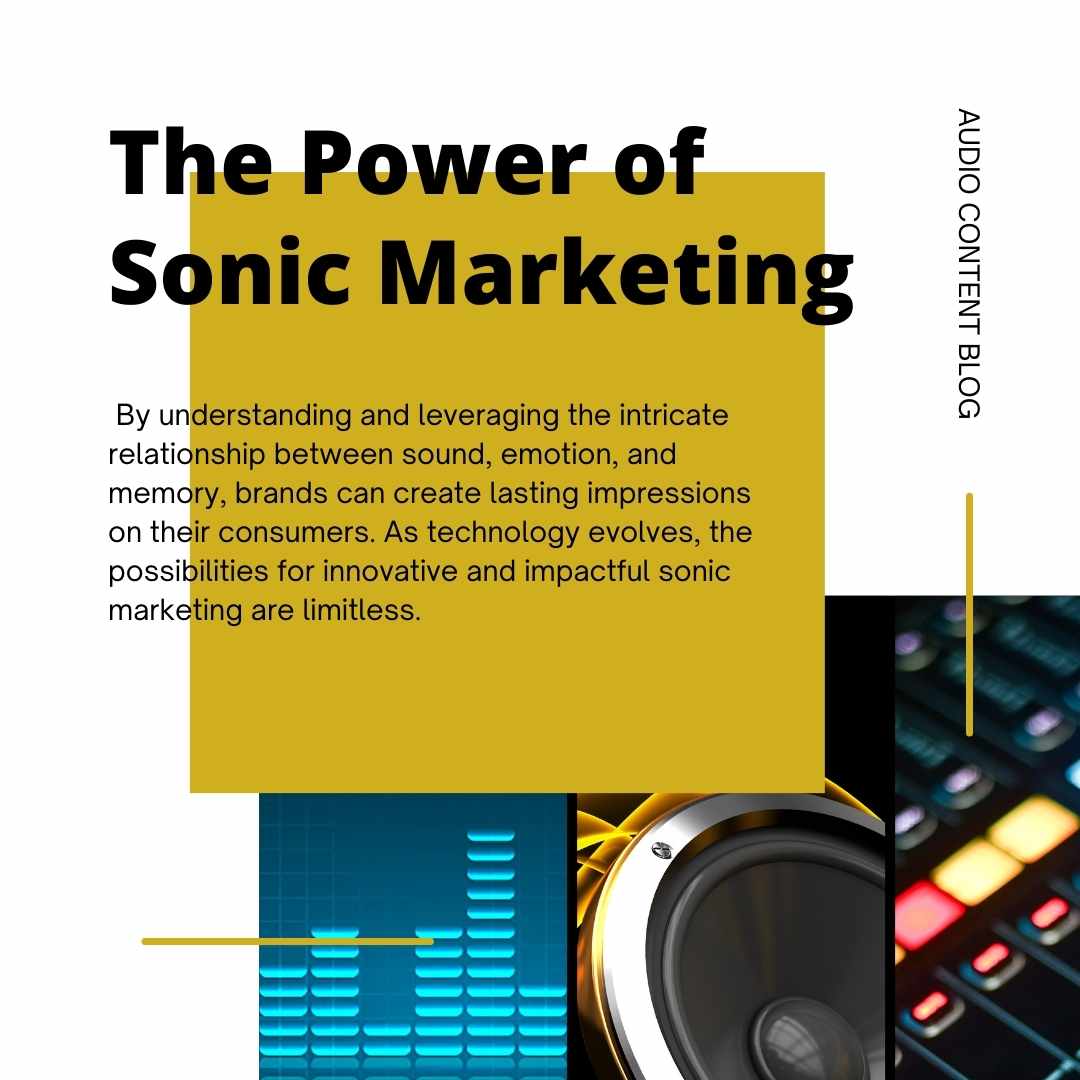As a seasoned musician and composer, deeply immersed in the world of content marketing and advertising, I’ve come to appreciate the incredible influence of sound in branding. At Audio Content Lab, a creative audio agency specializing in sonic marketing, I’ve had the firsthand experience of crafting jingles and soundscapes that not only catch the ear but also capture the heart and mind. In this blog, I’ll delve into the science and art of sonic marketing, exploring how it impacts our brain, evokes emotion, enhances memory, and ultimately aids in selling products.
The Science of Sound in Marketing
Sound and Emotion
The relationship between sound and emotion is profound. Research has consistently shown that music can elicit a wide range of emotions. A study by Juslin & Västfjäll (2008) highlighted this connection, explaining that music can induce emotions through brain mechanisms that involve the amygdala, a key player in emotional processing. This explains why a particular jingle or piece of music can instantly make us feel happy, nostalgic, or even motivated.
Memory Enhancement
Sound also plays a critical role in memory enhancement. The phenomenon known as the ‘earworm effect’, where a piece of music gets ‘stuck’ in one’s head, exemplifies this. This is not mere coincidence but a reflection of how our brains are wired. According to a study by Krumhansl (2002), certain characteristics of music, such as repetition, rhythm, and melodic contour, are key in enhancing memory. This is why a well-crafted jingle or sonic logo can remain in a consumer’s memory for years, continually reinforcing the brand’s identity.
Sound and Branding
In the realm of branding, sound is an underutilized yet powerful tool. When a brand’s identity is tied to a unique sound or piece of music, it can significantly increase brand recognition. A study by Hahn & Hwang (1999) demonstrated that music in advertising could significantly affect a brand’s identity and consumers’ perception of the brand. This is why at Audio Content Lab, we focus on creating unique sonic identities that resonate with a brand’s values and message.
Implementing Sonic Branding
Understanding the Audience
The first step in effective sonic branding is understanding the target audience. What sounds and music resonate with them? This involves not just demographic analysis but also psychographic understanding. A jingle that appeals to a young, energetic demographic might not resonate with a more mature, sophisticated audience.
Consistency is Key
Consistency in sonic branding is as crucial as in visual branding. A consistent sonic signature ensures that every time a consumer hears it, they immediately associate it with your brand. This repetition solidifies the brand’s presence in the consumer’s mind, as indicated by the mere exposure effect described by Zajonc (1968).
Emotional Alignment
The sound must align with the emotional tone of the brand. For instance, a brand that stands for excitement and adventure might use upbeat, energetic music. In contrast, a brand that represents luxury and sophistication might opt for more subtle, refined soundscapes.
The Future of Sonic Branding
Looking ahead, the potential of sonic branding is vast, especially with the rise of voice-activated technologies and audio-centric media like podcasts. Brands that can effectively leverage sound in their marketing strategies are poised to make a lasting impression in the minds of their consumers.
Integration with New Technologies
Voice-activated devices like smart speakers have opened new avenues for sonic branding. Brands can now create interactive experiences using sound, further enhancing consumer engagement.
Personalization
Advances in AI and machine learning are paving the way for personalized audio experiences. Brands can use data to tailor their sonic content to individual preferences, making their marketing efforts more effective.
Conclusion
Sonic branding is a powerful tool in the marketer’s arsenal. By understanding and leveraging the intricate relationship between sound, emotion, and memory, brands can create lasting impressions on their consumers. As technology evolves, the possibilities for innovative and impactful sonic marketing are limitless.
Remember, what we hear can be just as influential as what we see. In the symphony of marketing, sound plays a leading role.
References:
- Juslin, P. N., & Västfjäll, D. (2008). Emotional responses to music: The need to consider underlying mechanisms. Behavioral and Brain Sciences, 31(5), 559-575.
- Krumhansl, C. L. (2002). Rhythm and pitch in music cognition. Psychological Bulletin, 128(1), 35.
- Hahn, M., & Hwang, I. (1999). Effects of tempo and familiarity of background music on message processing in TV advertising: A resource-matching perspective. Psychology & Marketing, 16(8), 659-675.
- Zajonc, R. B. (1968). Attitudinal effects of mere exposure. Journal of Personality and Social Psychology, 9(2, Pt.2), 1-27.

